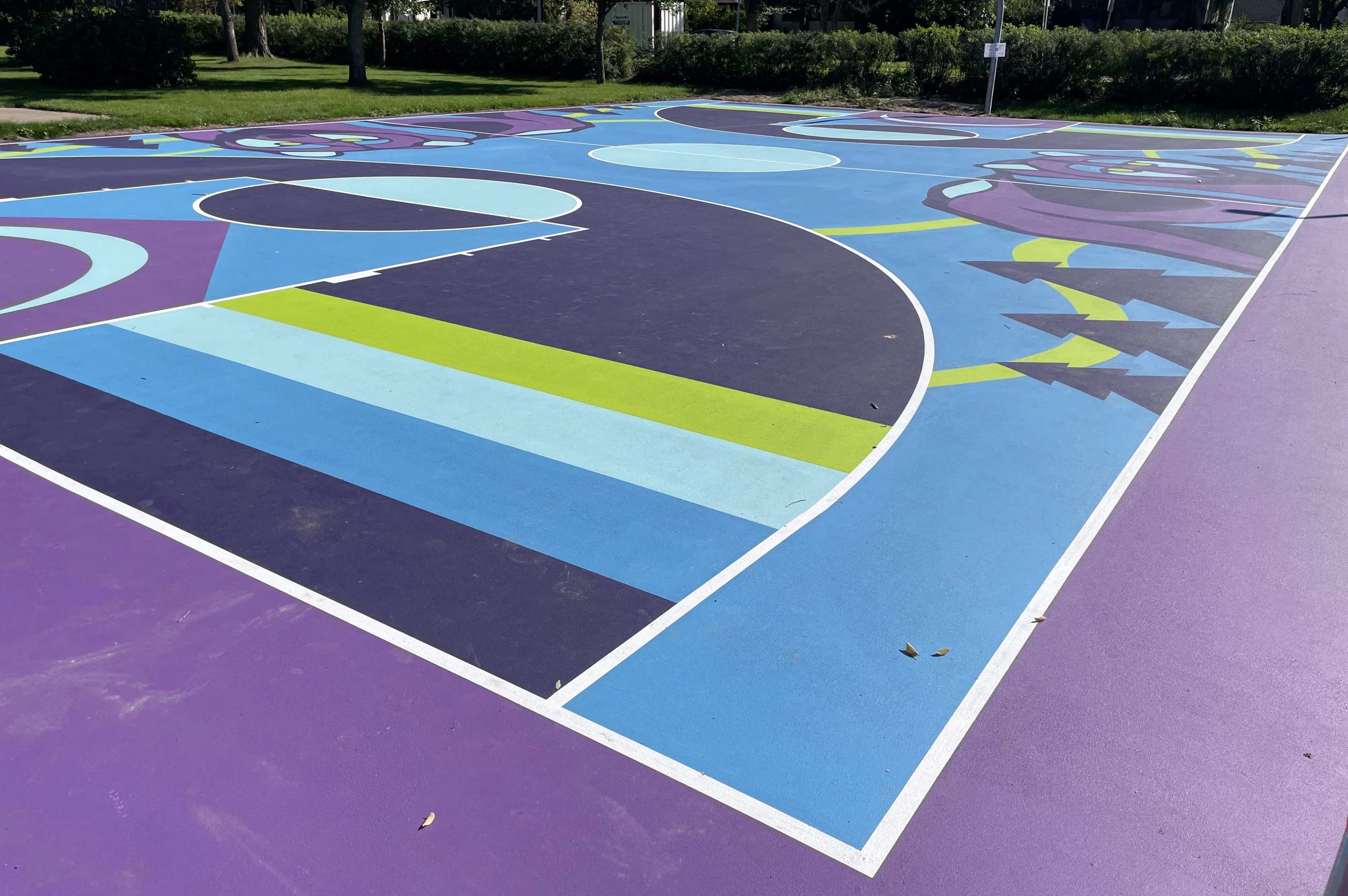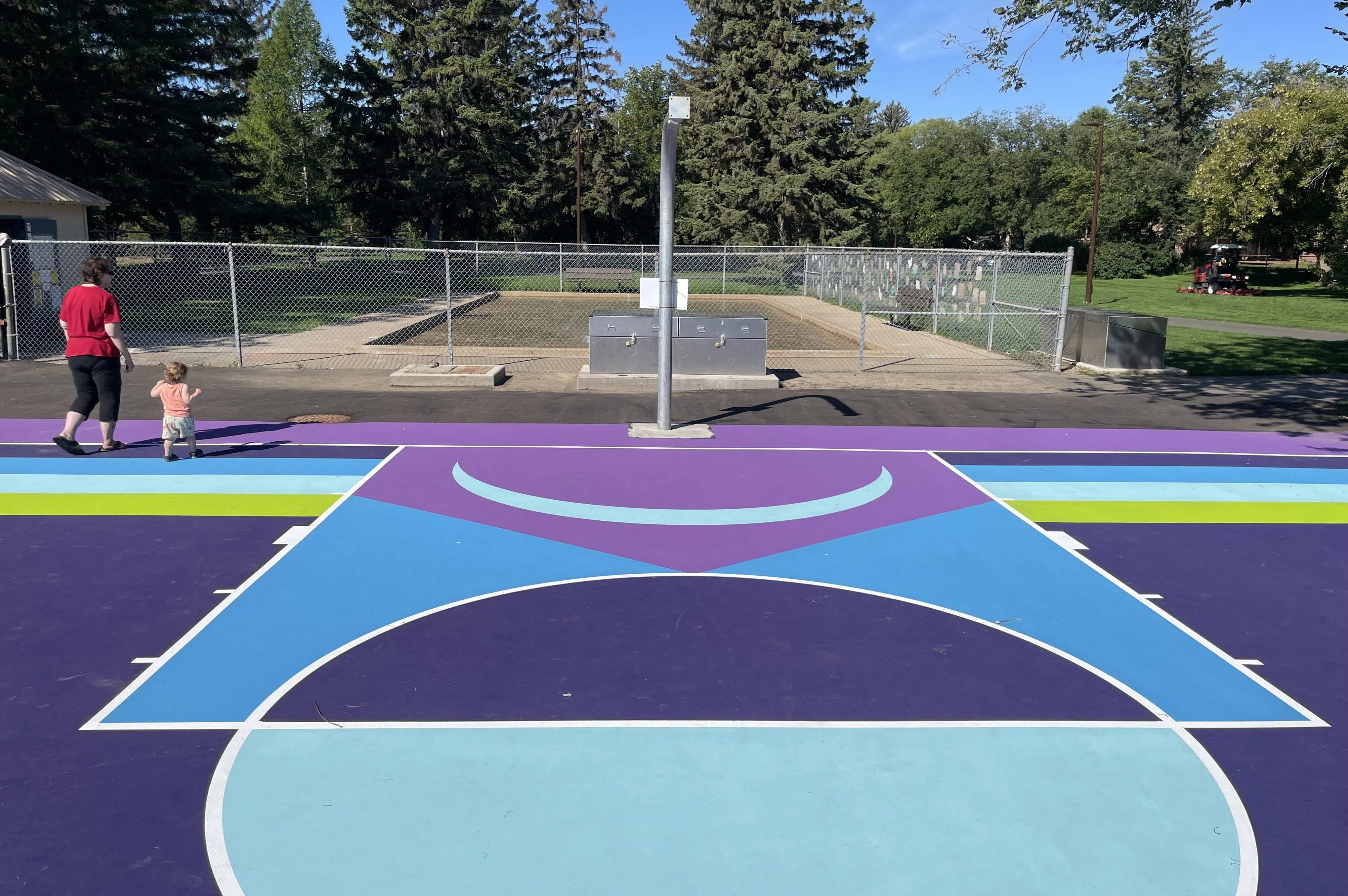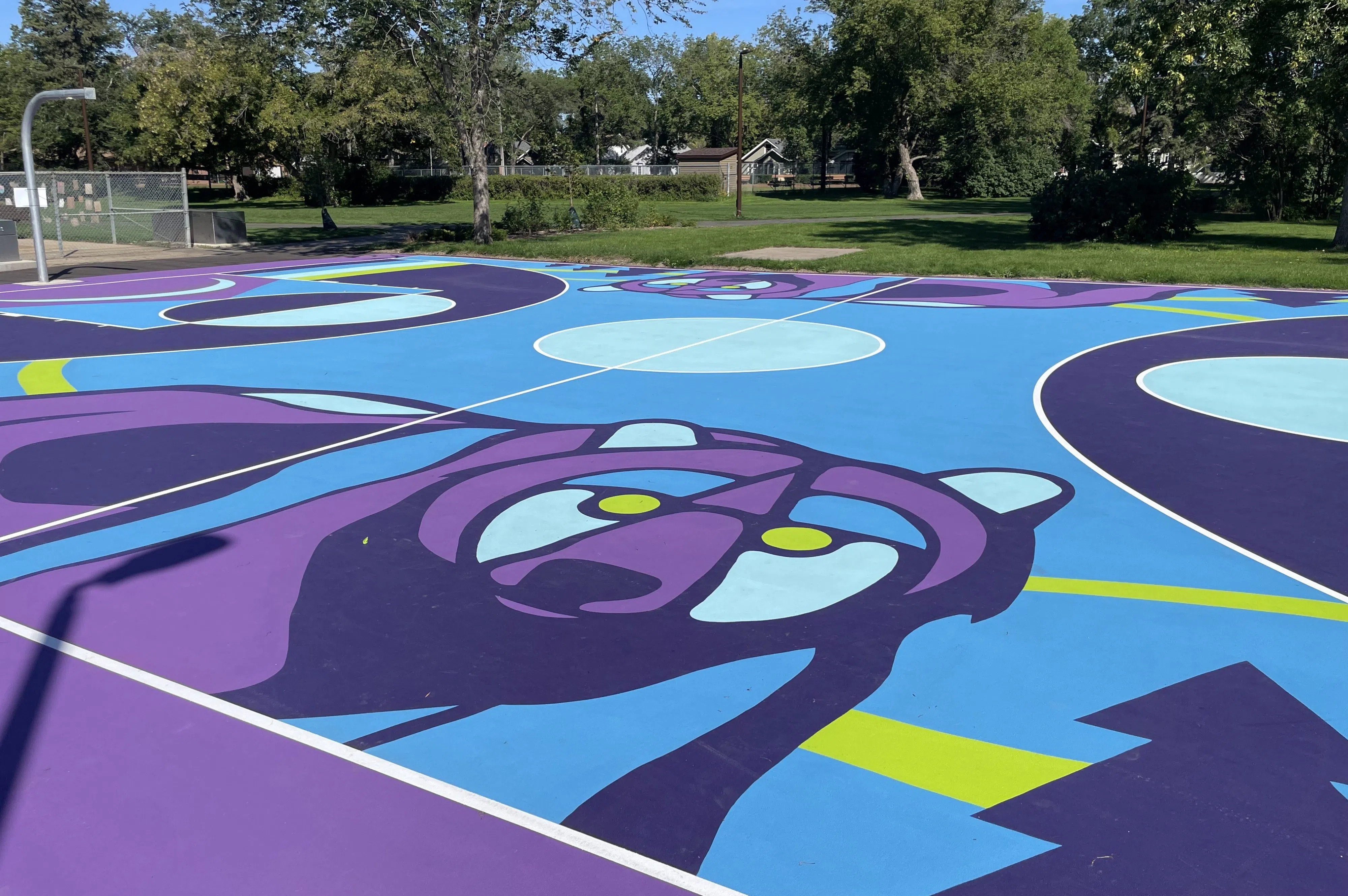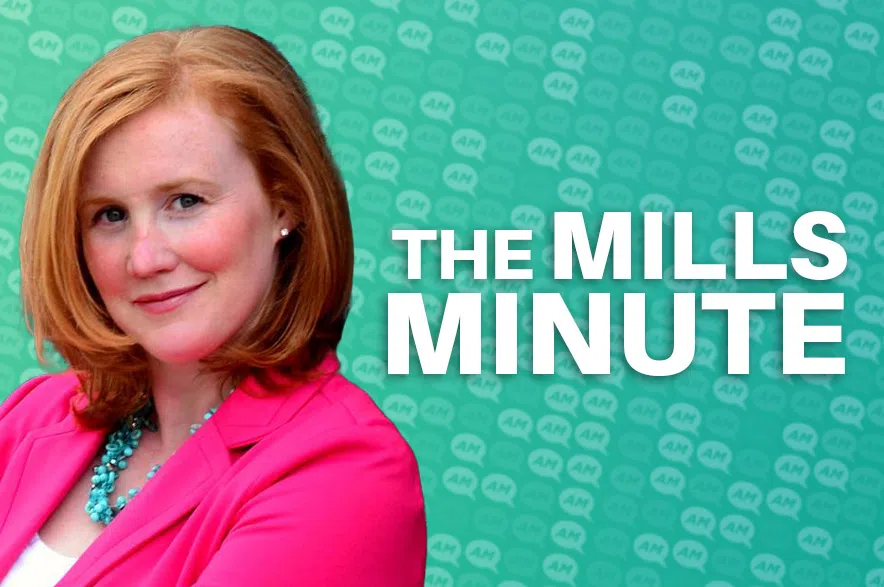There’s a couple of bears in Buena Vista Park, but you’ll only find them if you go to the basketball court.
In partnership with Buckets and Borders, an organization dedicated to restoring aging basketball courts across Canada, Indigenous artist Chris Chipak was tasked with redesigning the paved space.
Read more:
- Roughriders unveil new colours for Indigenous logo
- ‘Insane’: Artist moved by reception of 2025 Indigenous Riders logo
From the start he was set on painting bears, or Maskwa in Cree.
“It’s seen as a protector, it’s seen as a guide, as a nurturing animal, and represents courage,” Chipak said about the animal.
“I wanted that to be kind of the staple of when you step on this court: you need to have that bravery and not be afraid to make a mistake.”
Chipak, who grew up on reserve in Red Pheasant Cree Nation, said bears can be seen as angry animals.
But there’s a belief that the Creator told the bear to take its anger and transform it into courage, which he said can also apply to the game of basketball.
“Instead of reacting right away, you take your time until that moment comes where the seconds are coming down at the end of the game and you need to shoot,” he said.

One of Chipak’s nods to women in sport are the three stripes at the base of the three-point line, representing a ribbon skirt. (Marija Robinson/650 CKOM)
While bears are a prominent feature on the court, there are other symbols, some more hidden than others within the vibrant colours.
Each side has six evergreen trees representing the court’s location in Treaty 6 Territory.
In terms of colours, following the rules set by Buckets and Borders, Chipak had to stick to four or five shades.
He settled on the green, blue, and purple colour scheme as way to represent Saskatchewan’s northern lights.
Growing up, Chipak said he took the land and animals around him for granted. But once he moved into the city, he noticed a huge difference in the sky, no longer being able to see every star.
So the colours bring, “that country sky of the land of living skies to a court here.”

Within the free throw lane, Chipak included a hidden ‘M’ as tribute to the company Momentum, which he said referred him to Buckets and Borders for the art project. (Marija Robinson/650 CKOM)
Some of the less obvious symbols on the court pay tribute to women in sport.
They, “have a different form of courage and bravery that they need to show when it comes to their performing sports,” Chipak said.
The centre court, free throw line, and space underneath the basket represent moon phases, moving from a crescent to half-moon to full-moon and back across the space.
Much like the game of basketball, the moon “keeps moving back and forth until the time runs out,” Chipak said.
For women specifically, according to the artist, “their power coincides with the moon phases.”
Also featured inside the court’s three-point line are three stripes of colour representing a ribbon skirt.
Chipak explained how those stripes are at the baseline, and then as the line comes up, it gives the shape of a skirt.
With both of these design features, he said that way, “it’s not just a men’s sport, it’s everyone’s sport.”
Project combines love of basketball, art
Chipak’s love for basketball started as a kid, when he realized being tall gave him an advantage.
Growing up on reserve, he said didn’t have access to a basketball court. So, instead he got creative in his backyard.
“It was a lot of makeshift tires, just nailing or screwing anything that looked like a rim onto a wall, and playing with that and dribbling all over gravel until it became dirt and grassy patches.”
Getting creative with his space also meant quickly developing his skills.
“It was a learning curve, but it also helped me with my handling of a basketball, because you bounce it into the rock, bounces it the other way,” he said.
Chipak’s childhood also involved art.
While he started out with colouring books, once those filled up, Chipak began redrawing the characters, changing their arm positions and facial expressions.
It eventually led him away from colouring and into drawing,
The opportunity to redesign Buena Vista’s court blended his two childhood passions into one athletic art project.
Read more:











